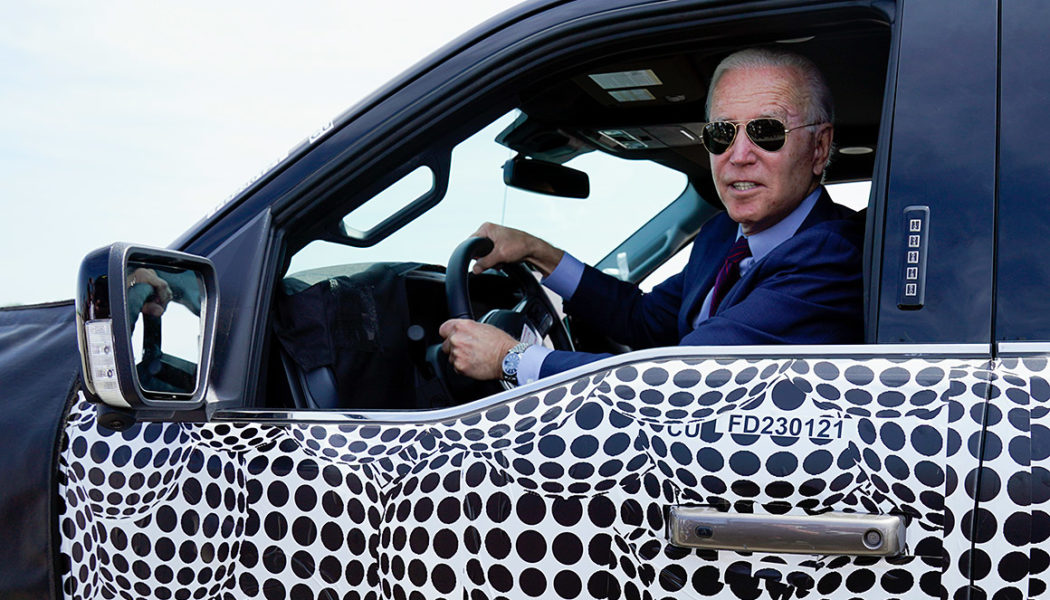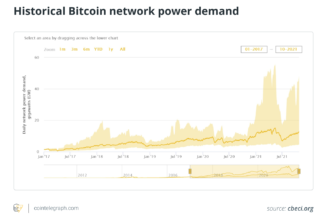“It’s a perfect storm in a good way for the Biden White House,” said Margo Oge, a former top career official at the Environmental Protection Agency who helped craft the first federal greenhouse gas standards for cars under the Obama administration.
The Biden administration announced Thursday morning it would issue a new executive order targeting 50 percent of all passenger vehicle sales to be zero-emission — mostly electric vehicles — by 2030. That goal was accompanied by new proposals to tighten the federal tailpipe pollution standards for cars and light trucks through 2026 — though the proposal is not expected to make up for the tailpipe emissions reductions from the Obama-era rules that the Trump administration gutted.
Biden’s electric vehicles agenda dovetails with his push for a clean energy standard to boost U.S. production of renewable sources of electricity.
“These steps are going to create good-paying union jobs and spur demand for domestic manufacturing, accelerating clean energy and clean cars, growing our capacity to build those technologies on factory floors with union workers here in the United States,” Biden said in July.
Environmentalists remain wary about Biden’s commitment to transforming the American love affair with cars — not so much because of the 14-mile-per-gallon hot rod in his Delaware garage, but more because of his history with the industry.
Until they closed around the time of the Great Recession, Delaware’s GM and Chrysler plants made the auto industry the state’s second biggest private employer. That put Biden on the car makers’ side, and on several occasions he opposed legislation that would have increased federal fuel economy rules between the 1980s to the early 2000s, a period when the efficiency of cars in the U.S. stagnated.
Biden switched that stance in 2007, when he helped pass legislation increasing fuel economy targets, but by then the Delaware industry was on the decline.
Now, said Dan Becker, director of the Safe Climate Transportation Campaign at the Center for Biological Diversity, the climate emergency has to outweigh that old-school loyalty to vehicle makers.
“The auto companies who had huge plants in Delaware, he knew them well … They want a weak rule. And they’ve been very clear about that,” said Becker. “But the planet matters more.”
The administration’s proposed pollution limits for the next five years will probably be weaker than many environmentalists have called for, but they would be far more stringent than those the Trump administration had set. The Trump Environmental Protection Agency dramatically weakened Obama-era vehicle pollution rules after the auto industry told Trump they would pose “a substantial challenge.”
Past federal efforts to drive sales of electric vehicles have fallen short, including Obama’s goal to put 1 million plug-in vehicles on the road by 2015. (The U.S. reached that goal only in the fall of 2018.) Even with sales of the vehicles climbing, largely on the back of market leader Tesla, electric vehicles remain only a tiny sliver of the total number of vehicles sold in the U.S.
Biden’s goals will boost pressure on a separate forthcoming rule addressing emissions from cars through 2030 to be even more aggressive. Between then and 2035 is when many climate experts say the U.S. needs to phase out gasoline-engine sales to meet the administration’s mid-century greenhouse gas goals.
That late-term rule is exactly where Biden should focus on making serious gains, as automakers have largely locked in their design plans through 2026, said Mary Nichols, the former chair of the California Air Resources Board.
“It’s just not terribly productive to focus too much on trying to squeeze a little bit more out of the fleet” over the next few years, said Nichols, who recently joined the board of Veloz, a pro-electric vehicle nonprofit whose board also includes representatives from GM, Ford and BMW.
Federal tailpipe standards work on a fleetwide average basis, which means that automakers could partially or fully meet more stringent requirements for gasoline vehicles by increasing their sales of emissions-free electric vehicles. But automakers can’t be allowed to coast by making no improvements to their remaining gasoline cars over the next 15 years even while selling more electric vehicles, Nichols added.
“And that’s where the real fight is going to be, because they don’t want to do anything at all. They don’t want to spend a penny, as they made it very clear, on anything other than electric vehicles,” Nichols said. “And that is not acceptable, as long as they’re going to continue making and selling those [gasoline] vehicles.”
Biden has also promoted non-regulatory ways to move toward electric vehicles, including rolling out a $2 trillion infrastructure bill earlier this year that proposed $174 billion for to install charging infrastructure in public parking areas and apartment buildings and to electrify the nation’s fleet of school buses and transit buses. The Senate’s bipartisan infrastrucrure deal has chopped that to $7.5 billion, and prospects for more money in a Democrats-only reconciliation bill are hazy at best.
Pressure from Washington isn’t the only thing pushing car manufacturers to go electric. Supporters of the trend credit many automakers with turning a corner on their thinking about future powertrains.
“When Biden today says that the future is electric, he’s not actually telling the automakers anything new,” said Johanna Chao Kreilick, president of the Union of Concerned Scientists.
The shift in no small part is due to strong mandates in Europe and Asia. The U.K. has banned new gasoline car sales by 2030. The European Union has proposed a similar ban starting in 2035, and China has mandated that electric vehicles make up 40 percent of sales by 2030.
Such bans are nowhere near as advanced in the U.S.
California Gov. Gavin Newsom has ordered his state to prohibit gasoline car sales by 2035. Washington legislators earlier this year passed a similar ban by 2030, but Gov. Jay Inslee vetoed it because it would not take effect until 75 percent of cars in the state paid a road usage fee, a measure designed to ease dependence on the gasoline tax. And no serious discussion of a zero-emissions vehicle mandate is occurring at the federal level, even as climate advocates call it essential.
“It’s really Europe and China that are pushing the industry to move to electric vehicles, not the U.S. Even California’s lagging,” said Dan Sperling, a member of CARB.
Still, the overseas mandates have prompted automakers trying to operate in a global market to get more specific about their sales goals in the U.S.
GM, the leading domestic automaker, says it plans to stop selling gasoline and diesel cars by 2035. Audi and Jaguar Land Rover have made similar promises for the mid-2030s. Volkswagen says it will stop selling fossil fuel cars in Europe by 2035, though sales in the U.S., China and other markets is expected to continue past that.
Other manufacturers have longer zero-emissions plans, with Mazda, Mitsubishi and Nissan eyeing 2050 targets. GM and Ford have both announced tens of billions of dollars in electric vehicle investments through 2025.
“This is the first time in my long career in this area … I see an alignment of a regulated industry, car companies, with federal, state and local policymakers and regulators,” said Oge, who now chairs the board of the International Council on Clean Transportation and is a member of Volkswagen’s International Sustainability Council.
Still, most manufacturers have a long way to go to fully shift to electric powertrains.
After several years of stagnating domestic sales, electric vehicle market share — which includes plug-in hybrid vehicles as well as battery electric and fuel cell vehicles — increased from 2.3 percent in June 2020 to 3.8 percent in June 2021, according to a recent report from the industry group Alliance for Automotive Innovation. Battery electric vehicle sales accounted for 2.75 percentage points of that, up 0.83 percentage points from the year prior.
One challenge that automakers are only just starting to address is Americans’ strong preference for pickup trucks and SUVs over sedans.
The Obama administration had to scale back its initial hope that its emissions rule would achieve a 54.5 mpg average by 2025 after light trucks significantly outsold initial projections.
But new options heading to dealerships in the next few years could ease the transition.
Ford’s electric F-150 Lightning got a boost when Biden got behind the wheel for a test drive in May — “This sucker’s quick,” he told reporters afterward. Meanwhile, Tesla has gotten over 1 million reservations for its futuristic-looking Cybertruck. GM will start delivering electric Hummers later this year and is developing two more electric pickups.
As for the Corvette-loving president, by the time he retires from the Oval Office, Biden may be able to have the best of both worlds.
Rumor has swirled for months that Corvette plans to introduce an all-electric model, said Steve Blanchies, a retired letter carrier and president of the Corvette Club of Northern Delaware, which years ago made Biden an honorary member. Chevrolet teased a 2023 Z06 in July; the ad’s tagline — “The streets will never sound the same” — has prompted speculation that it will be electric.
But if the president wants an electric Corvette, he’ll have to get in line. “I have my name in for one of those,” Blanchies said.
Debra Kahn contributed to this report.









